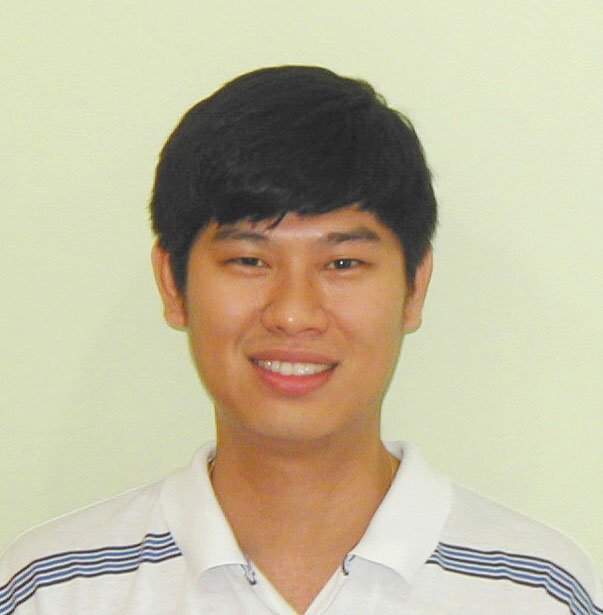ALPER CHRISTOPHER GO JOINS HUBBLE SPACE TELESCOPE TEAM TO INVESTIGATE RED, JR. |
|
March 30, 2006 by Father Victor Badillo, S.J. |
|
|
Mr. Christopher Go was invited on March 21, 2006 to be a member of the Mr. Go discovered the New Red Spot of Jupiter on February27, 2006, and alerted the scientific community. The discovery was headlined in NASA’s web site and widely reported in other media. The Great Red Spot (GRS), discovered some 300 years ago, has been a distinctive feature of Jupiter. Now it is joined by the new red spot or Red Jr. Red Jr. is in the South Temperate Belt, south of the GRS in the South Equatorial Belt. The discovery was not pure luck. Mr. Go had been closely monitoring in detail the developing features of Jupiter. Earlier, in 2004, he made his first discovery, a white spot in the North Equatorial Belt. He monitored it for a few weeks and saw it enlarge and evolve into a major rift system. Sky and Telescope featured this discovery. Scientists are eagerly studying Red Jr., since its continuing development When Mr. Go felt confident of his photos, he began posting them on the web site of ALPO (Association of Lunar and Planetary Observers). The first time he submitted his images, he was accused of plagiarizing Hubble images. People could not believe the quality of his images. Undaunted he continued perfecting imaging Jupiter. It was not until he made a sequence of Jupiter images that people gave credence to his images. He takes images in the infrared, ultraviolet, methane as well as in the visible range of the spectrum. Another discovery of Chris Go was the exceptional quality of the imaging quality of the atmosphere of his residence in Cebu City. On a scale of 10 the quality is 8 and frequently is 9 or 10. Elsewhere, astronomers ambition for a 6. Astronomers set up observatories far from cities and high above the clouds. The ultimate goal was a telescope in space. This was realized in the HST. Chris became active in astronomy in 1986 when Comet Halley became visible. He was in High School then. He started with binoculars. In 1988, with a few friends, he organized the University of San Carlos Astronomical Society. In time and with dedication he perfected his skills and gradually acquired the best equipment. He is a member of the Astronomical League of the Philippines. Twenty years after Comet Halley cast its pale magic on young Christopher, he is now a co-principal investigator with the top ten experts of Jupiter. His email address and web site are: christone@pacific.net.ph and his astro-webpage is http://astro.christone.net. NEW FLASH: ALPer Christopher Go has made a separate webpage for monitoring the Red, Jr. (Oval BA). It contains his images as well as images and links of other planetary imagers of the world as well. You can check it out at: http://www.redspotjr.com/ .
Related Article - ALPER CHRISTOPHER GO RED, JR. IMAGE FEATURED IN MAJOR ASTRONOMY SITES (March 3, 2006) NOTE: Father Victor Badillo, S.J. is an honorary director of the Astronomical League of the Philippines, Inc. (ALP) and he can be reached throught his email at vlbadillo@yahoo.com .
|
|
|
For Comments jkty@astroleaguephils.org |
 Jupiter research team of the Hubble Space Telescope
(HST). The tight schedule of activities of HST allows a limited amount of time for
Jupiter. The Jupiter team is responsible for the activities for this limited period. Mr.
Go was chosen for his achievements and expertise. He will not only provide continuous
imaging from Cebu but will analyze results and direct research.
Jupiter research team of the Hubble Space Telescope
(HST). The tight schedule of activities of HST allows a limited amount of time for
Jupiter. The Jupiter team is responsible for the activities for this limited period. Mr.
Go was chosen for his achievements and expertise. He will not only provide continuous
imaging from Cebu but will analyze results and direct research. is
visible. Three white spots discovered in 1930 merged to form a white oval in 2000.
"The oval was white in November 2005, slowly turned brown in December 2005, and red a
few weeks ago," reports Mr. Go. "Now it is the same color as the Great Red
Spot!" Red Jr. now is half the size of the GRS and may grow larger. The Belts of
Jupiter move at different speeds. When in a short time Red Jr. and the GRS touch,
spectacular results are expected.
is
visible. Three white spots discovered in 1930 merged to form a white oval in 2000.
"The oval was white in November 2005, slowly turned brown in December 2005, and red a
few weeks ago," reports Mr. Go. "Now it is the same color as the Great Red
Spot!" Red Jr. now is half the size of the GRS and may grow larger. The Belts of
Jupiter move at different speeds. When in a short time Red Jr. and the GRS touch,
spectacular results are expected.